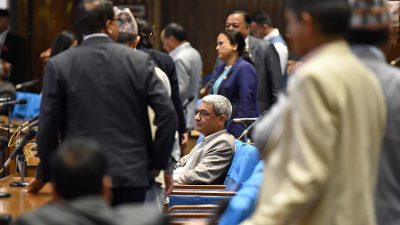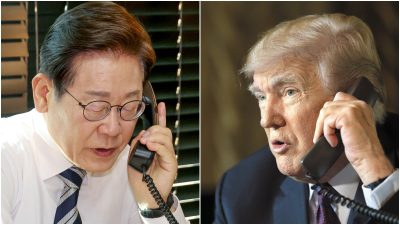Nepal, June 5 — In commercial Nepali cinema, there are three typical female characters: the saintly mother in a worn cotton sari, the obedient girl next door in a kurta and the mouthy “modern” woman in a leather jacket. They all have tear-streaked cheeks at many, or at least one point in the film.
What frustrates me the most is the tendency to portray Nepali women characters under two extremes. One is a character that just happens to be a woman because they felt the need to include a woman. Given the way such characters are written, they could have cast a man, and it wouldn’t have made a difference. The other extreme is a woman defined and bound solely by her gender. This character is always a woman and nothing else. Take, for instance, a mother who is only ever a mother. A love interest with no depth or personality outside her relationship with her (often male) partner. We do not get to know the character apart from her assigned gender-based role.
While there have been some arguments about a paradigm shift in how women are portrayed in Nepali cinema through films such as Shambhala, Rajagunj and Aina Jhyaal ko Putali, it hasn’t caught on with most commercial Nepali cinema. But then male characters aren’t particularly well written either. They also suffer from being pigeonholed into one gimmicky role or another. But if one had to compare just these two genders, male characters are shown to be a lot more dynamic and human. It feels almost as if, for many Nepali filmmakers, womanhood inherently robs one of personhood.
A film rarely achieves true representation. Some well-meaning films tread the middle ground with characters who are often many things despite being women or a “strong female” character who goes through it all and is still somehow a martyr.
That said, I have enjoyed some recent heartening portrayals of women on screen. In Shambhala by Min Bham, the problems that befall Pema are gender-specific; they are hardships and scrutinies that she has to face because she is a woman. However, the film doesn’t reduce her to the confines of womanhood’s social definition. Instead, it gives her agency, focusing solely on Pema as a character, her experiences and her choices (instead of leaning into or engaging with the surrounding noise of her circumstances).
Similarly, in Deepak Rauniyar’s Rajagunj, Pooja is a person of multitudes. She is queer in an unaccepting society, an out-of-touch pahadiya in Madhesh, a daughter navigating a complicated relationship with her ageing father, and an honest detective inspector in a crooked, staunchly patriarchal field.
In Sujit Bidari’s Aaina Jhyaal ko Putali, the friction between gender norms and 13-year-old Bidya’s dreams is the centrepiece of the film. We get to know Bidya through her hesitantly harboured dreams and obligatory responsibilities.
These films succeed in freeing these characters from being women struggling with generic, “womanly” plights. These characters struggle with betrayal, honour, love, responsibility and morality-things that plague us as humans. That is a true representation. As Jina Jeon explained in her 2021 Harvard Westlake Chronicle article, “True representation serves to dismantle stereotypes and empower people of all ages who want to see someone that looks like them on a screen or a stage.”
The representation debate is old and tired, and it has become even more exhausting given the placative, performative works we are receiving in its name. Representation has been analysed from a socio-cultural, developmental and economic perspective. But what of the human choice? Even before an audience meets a character on screen, she has been written deliberately and meticulously to be that way. Her personality, her values, her clothes, her hair, her mannerisms, her relationships, the words she uses and what she believes are deliberate choices filmmakers make. The disconnect between our lives as women and the portrayal of women in some Nepali commercial films today is becoming harder to justify. Especially considering the immense effort required to prepare a character for the screen. So far, that effort is being spent on writing women who are barely people.
In a research report published by Plan International titled “Representations of Women and Girls in Nepal’s Cinema” in 2020, the writers found that out of the 102 women characters they analysed, only five were shown to have a mission beyond romance. Samples suggested that a woman’s task is primarily tied to that of the corresponding male character. Her role is limited to assisting the man in his mission. It was also shown that women rarely make independent decisions, further establishing women as incapable of having their own missions.
It has been pointed out countless times that a writer’s decisions often reflect their personal philosophies. When we start viewing characters as hand-made by writers, their choice to disarm them and leave them as hollow puppets seems more sinister. Why are writers choosing to write caricatures of women over actual characters, especially when they know how much of an impact their work has?
The responsibility of a writer is not to appeal to or coddle a bigoted audience. Nor is it to reinforce our lapses in judgment. It’s bad enough to be a woman in a society that barely considers us human. The least they can do is hold up an honest mirror to the women in our lives.
Womanhood may be significant, but it is not central to our identities. And I wish I could see more Nepali characters whose gender, while it shapes their experience, is in no way their most intriguing or defining trait.













